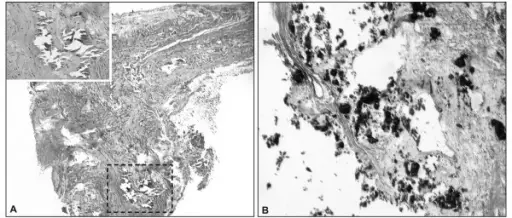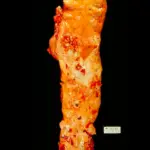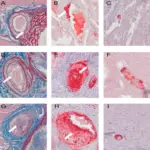Monckeberg medial sclerosis is the calcification of the tunica media of large and medium-sized muscular arteries.
What is the Pathology of Monckeberg Medial Sclerosis?
The pathology of Monckeberg medial sclerosis is:
-Etiology: The cause of Monckeberg medial sclerosis is the deposition of calcium salts.
-Genes involved: Unknown.
-Pathogenesis: The sequence of events that lead to monckeberg medial sclerosis is not fully known, but factors like advancing in age and chronic renal diseases lead to sclerosis.
-Morphology: The morphology associated with monckeberg medial sclerosis shows pipestem-like rigid tubes without causing narrowing of the lumen.
-Histology: The histology associated with Monckerberg medial sclerosis shows calcium salts deposition in the tunica media.
How does Monckeberg Medial Sclerosis Present?
Patients with Monckeberg medial sclerosis are typically males that present at the age of around 50 years old. The symptoms, features, and clinical findings associated with Monckeberg medial sclerosis include ulcer formation, heart attacks, stroke, and medial mesenteric occlusions.
How is Monckerberg Medial Sclerosis Diagnosed?
Monckerberge medial sclerosis is diagnosed by ultrasound, x-rays, and ankle-brachial plexus index.
How is Monckerberg Medial Sclerosis Treated?
Mokerberge medial sclerosis is treated with low doses of vitamin D, calcimimetics, and magnesium biphosphate.
What is the Prognosis of Mokergberg Medial Sclerosis?
The prognosis of Monckerberg medial sclerosis is fair.



